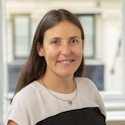Simons Investigators
- Email:
[email protected]
Simons Investigators are outstanding theoretical scientists who receive a stable base of research support from the foundation, enabling them to undertake the long-term study of fundamental questions.
The Investigator program has been discontinued.
Simons Investigators in Mathematics, Physics, Astrophysics and Computer Science
The intent of the Simons Investigators in Mathematics, Physics, Astrophysics and Computer Science programs is to support outstanding theoretical scientists in their most productive years, when they are establishing creative new research directions, providing leadership to the field and effectively mentoring junior scientists. A Simons Investigator is appointed for an initial period of five years. Renewal for an additional five years is contingent upon the evaluation of scientific impact of the Investigator.
Simons Investigators in Mathematical Modeling of Living Systems (MMLS)
This program aims to help the research careers of outstanding scientists working on mathematical and theoretical approaches to topics in the life sciences. A Simons Investigator in MMLS is appointed for five years.
Math+X Investigators
This program encourages novel collaborations between mathematics and other fields in science or engineering by providing funds to professors to establish programs at the interface between mathematics and other fields of science or engineering. A Math+X Investigator is appointed for an initial period of five years. Renewal for an additional five years is contingent upon the evaluation of scientific impact of the Investigator.
- Email:
[email protected]
- Email:
[email protected]
2019
Bhargav Bhatt, Ph.D.
University of Michigan
Bhargav Bhatt works in arithmetic algebraic geometry, with an emphasis on questions in positive and mixed characteristic. His research, which often draws on ideas from derived algebraic geometry, has also contributed to the solution of long-standing problems in commutative algebra and algebraic topology.
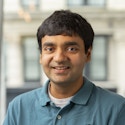
Xiuxiong Chen, Ph.D.
Stony Brook University
XiuXiong Chen is a leading figure in complex geometry with fundamental contributions to the field. He and his collaborators have made major breakthroughs and finally settled several long-standing problems. With S.K. Donaldson and S. Sun, Chen proved the stability conjecture (which goes back to Yau) on Fano Kähler manifolds. With B. Wang, Chen confirmed the Hamilton-Tian conjecture on the Kähler-Ricci flow on Fano manifolds. With J.R. Cheng, Chen found a groundbreaking a priori estimate for Kähler metrics, under assumptions on the scalar curvature, which involved a fourth-order differential equation and verified the fundamental Donaldson geodesic stability conjecture and the properness conjecture.

Nets Katz, Ph.D.
California Institute of Technology
Nets Katz is a harmonic analyst. Much of his work has been focused on the Kakeya problem. Because that problem has such broad connections with different parts of mathematics, it has led him to work in other areas, such as incidence geometry and additive combinatorics. Jointly with Larry Guth, he solved (up to logarithmic factors) the Erdos distinct distances problem, in the process introducing polynomial partitioning which is now having an impact on Kakeya.

Elchanan Mossel, Ph.D.
Massachusetts Institute of Technology
Elchanan Mossel’s primary research fields are probability theory, combinatorics, theoretical computer science and statistical inference. Mossel is broad and collaborative in his research. Much of his work spans different areas of mathematics or bridges between mathematics and other sciences. With collaborators, he made fundamental contributions to discrete Fourier analysis and its applications to computational complexity and voting theory. In the area he named ‘combinatorial statistics,’ his collaborative work includes important discoveries on tree broadcast models and associated reconstruction problems, detection of block models, the inference of evolutionary histories and, more recently, deep inference.

Rouven Essig, Ph.D.
Stony Brook University
Rouven Essig is a theoretical particle physicists whose research focuses on the search for dark matter and other new particles beyond the standard model. He has helped pioneer several novel direct-detection concepts to probe dark matter below the proton mass and has been a leader in establishing this as a new research direction, attracting significant theoretical and experimental efforts. He has also been a leader in conceiving of fixed-target experiments to search for new forces, helping to spawn several new efforts. Although a theorist, he is co-leading or participating in several experiments searching for dark matter and new forces.

Sean Hartnoll, Ph.D.
Stanford University
Sean Hartnoll’s recent work has aimed to understand the flow of charge and heat in strongly quantum many-body systems without well-defined ‘quasiparticle’ excitations. His research has mobilized fundamental principles of statistical quantum mechanics to constrain this flow, and he has also studied solvable models that can reveal organizing principles behind non-quasiparticle physics. He is known for results on holographic models that translate the dissipative dynamics of black hole event horizons into phenomena of interest in condensed matter systems and has co-authored a book on the resulting holographic quantum matter.

Gil Refael, Ph.D.
California Institute of Technology
Gil Refael is best known for his works on realizing Majorana fermions in solid state systems and on quantum dynamics and control. Refael’s group has introduced the concepts of Floquet topological insulators and topological polaritons, and additionally worked on disordered magnets, superconductors and superfluids. Currently, he focuses on implementing concepts from topological physics to quantum control, as well as the microscopic origins of many-body localization.
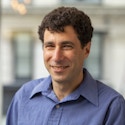
Neal Weiner, Ph.D.
New York University
Neal Weiner works on physics beyond the standard model, with an emphasis on understanding dark matter. He was active in developing the cosmology and signals of dark matter with interactions and contributed many ideas that helped shape our current thinking on theories of dark matter. Of late, he has focused on understanding the range of dark structures that may populate the Milky Way and how to detect them with gravitational lensing.

Cenke Xu, Ph.D.
University of California, Santa Barbara
Cenke Xu’s research has contributed to several different topics in theoretical condensed matter physics, such as quantum spin liquid states, interacting topological insulators and more generally symmetry protected topological phases, duality of unconventional 2+1 dimensional quantum critical points, and new understanding of non-Fermi liquid phenomena constructed based on the Sachdev-Ye-Kitaev model and related models. Most recently Xu’s group is also interested in understanding the strongly correlated phenomena observed in graphene-based systems with Moiré superlattice.

Daniel Kasen, Ph.D.
University of California, Berkeley
Daniel Kasen studies energetic astrophysical phenomena such as supernovae and compact object mergers and their applicability as probes of physics and cosmology. His models of electromagnetic signals have guided observational efforts and played an important role in interpreting the first neutron star merger jointly detected in light and gravitational waves. His work has helped illuminate the diverse ways in which stars die and how the heavy elements in the universe formed from their ashes.

Rachel Mandelbaum, Ph.D.
Carnegie Mellon University
Rachel Mandelbaum is an observational cosmologist who uses data from large sky surveys to measure gravitational lensing (the deflection of light from distant objects by more nearby mass). She works at all stages of the measurement process, including data analysis methodology, production of theoretical predictions and development of statistical methodology. She uses gravitational lensing measurements to reveal the connection between the visible components of galaxies and invisible dark matter, which can answer basic questions about galaxy evolution and to reveal how cosmic structure has grown and evolved, which relates to the accelerated expansion rate of the universe and dark energy.
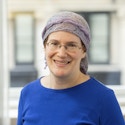
David Blei, Ph.D.
Columbia University
David Blei studies probabilistic machine learning, including its theory, algorithms and application. He has made contributions to unsupervised machine learning for text analysis, approximate Bayesian inference with variational methods, flexible modeling with Bayesian nonparametrics and many applications to the sciences and humanities.
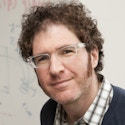
Oded Regev, Ph.D.
New York University
Oded Regev works on mathematical and computational aspects of point lattices. A main focus of his research is in the area of lattice-based cryptography, where he introduced the Learning with Errors (LWE) problem. This problem is used as the basis for a wide variety of cryptographic protocols, including some of the leading candidates for post-quantum secure cryptographic standards. He is also interested in quantum computation, theoretical computer science and, more recently, molecular biology.
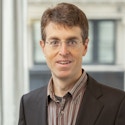
Brent Waters, Ph.D.
University of Texas at Austin
Brent Waters is a leader in the field of cryptography. His pioneering work introduced the concepts of attribute-based encryption and functional encryption. He is known for developing novel proof techniques including lossy trapdoor functions, dual system encryption and punctured programming analysis in cryptographic code obfuscation.

Benjamin Machta, Ph.D.
Yale University
Ben Machta examines how physical laws constrain the design principles of biological systems. His research uses statistical physics, information theory and Riemannian geometry to understand how the need to coordinate and process information constrains function. He has worked to understand how simple models emerge from complex molecular details and to bound the energetic needs of small thermodynamic systems. He has also sought to understand how cells exploit the subtle physics near critical points to sense and respond to their environment.

Caroline Uhler, Ph.D.
Massachusetts Institute of Technology
Caroline Uhler has made major contributions to the development of methods in statistics and machine learning for applications in genomics. Her work to date has broken new ground on providing a systematic approach to studying graphical models. In particular, she uncovered statistical and computational limitations for causal inference and developed a novel framework for causal structure discovery from a mix of observational and interventional data. This led to new models and algorithms for inferring gene regulatory networks and for disease diagnostics by integrating gene expression data with the 3-D organization of the genome.
